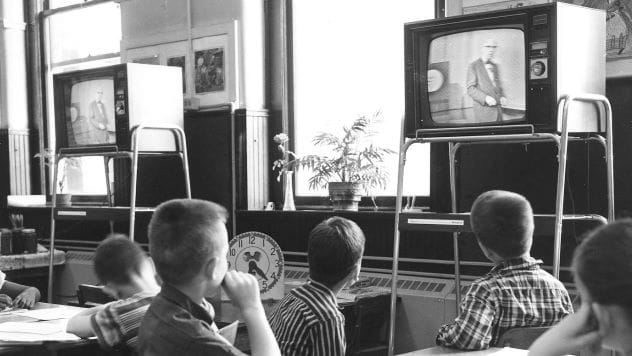Television has transformed how we receive information and entertainment. From news and documentaries to sports and movies, TV channels have evolved to meet our diverse needs. While some channels have stood the test of time, many have disappeared due to various reasons, leaving behind memories, good and bad. Let’s explore ten popular TV channels that no longer exist but once made a significant impact.
Setanta Sports Channel, UK
Setanta Sports, founded in the UK and later acquired by Eircom Limited, was a major player in sports broadcasting. By the late 1990s, it had expanded its coverage to include American golf, English rugby union, boxing, and football. A major coup was securing rights to the Scottish Premier League in 2004 and 46 Premier League matches from 2007 to 2010.
Despite fierce competition from Sky Sports, Setanta appeared to be thriving. However, the channel borrowed heavily to acquire sports rights, accumulating a debt of around £250 million. In 2009, Setanta was forced into bankruptcy after failing to make payments for television rights, owing the English Premier League £30 million. This collapse caused financial strain for several British football clubs. While Setanta continues to operate in Eurasia after being purchased by Discovery, its UK version is no more.
The Comedy Channel & HA!
In 1989, HBO launched The Comedy Channel, focusing on stand-up comedy and classic movie clips. Viacom followed with HA!, which centered on acquired sitcoms. Both channels struggled to gain traction, with only about seven million subscribers each. Cable operators were hesitant to choose sides between the two industry giants.
Recognizing the potential, the two channels merged in April 1991 to form Comedy Central. This merger doubled their subscriber base to 15 million, providing a stronger foundation for growth. Today, Comedy Central remains a popular and successful comedy channel in the United States.
HawkVision
HawkVision was launched in 1992 by Bill Wirtz, the owner of the Chicago Blackhawks. Wirtz, believing that televising home games would be unfair to season ticket holders, canceled traditional broadcasting offers. Instead, HawkVision offered Blackhawks games to fans for a fee of up to $19.95 per game.
After the Stanley Cup playoffs, Wirtz offered access to regular-season home games for $29.99 per month, a price hike that angered fans. The channel proved unprofitable after just one season, and ticket sales plummeted. After Wirtz passed away in 2007, the restriction on televising home games was lifted, marking the end of the HawkVision experiment.
ITV Play
ITV Play was a short-lived British participation television station that aired shows like The Common Room, The Debbie King Show, and Quizmania. However, it was plagued by a premium rate phone-in scandal, where viewers were charged high prices to participate in contests with minimal chances of winning.
The controversy led to legal issues and financial fallout for ITV, which had to set aside millions to cover the costs of investigations and reports. Consequently, all text and interactive voting on shows were suspended, and ITV Play closed down in March 2007, less than a year after its debut.
Men & Motors
Men & Motors, launched in 1996, catered to men with an interest in cars and women. It featured car shows, action movies, adult cartoons, and footage of scantily clad women. The channel initially aired on Freeview but was removed to make way for ITV Play. It continued on satellite and cable television.
In 2012, Men & Motors was relaunched with new hosts and eventually found success as a YouTube channel. Today, it offers an on-demand format with content from its extensive archives, attracting millions of viewers.
Dumont Network
Dumont Network was one of the first major television networks in the United States, alongside CBS and NBC. It stood out by offering advertisers a unique midweek special, allowing them to use Dumont labs for commercial purposes. Shows like The Honeymooners originated as sketches on Dumont.
However, Dumont lacked the financial resources of NBC and CBS. Limitations imposed by the FCC, including restrictions on the number of television stations an organization could own, hindered its expansion. The network ultimately switched to Ultra High-Frequency (UHF) broadcasts to save money, but this proved unpopular in the 1950s, leading to the channel’s closure.
Nuts TV
Nuts TV was a British television channel that offered a mix of fun and bizarre content. Available on Freeview, it featured celebrity hosts and a regular lineup that included news, sports, girls, and sex-related content. One segment featured model Lucy Pinder reading literature while dressed in lingerie.
Despite its unique approach, Nuts TV failed to attract a substantial audience and was replaced by CNN in 2009. The channel lasted just under two years, and the associated Nuts magazine closed five years later.
The Cable Music Channel
Founded by Ted Turner in 1984, The Cable Music Channel (CMC) aimed to compete with MTV. Taking a family-oriented approach, CMC launched with Randy Newman’s “I Love L.A.” as its first video. However, with MTV already striving to expand its distribution, there was little room for a second music video network.
After just one month, Ted Turner shut down CMC and sold it to MTV’s parent company. Lacking the cable providers, videos, and viewership to compete, CMC aired from October to November 1984. MTV, on the other hand, has become a leading entertainment channel worldwide.
Sumo TV
Sumo TV, launched in 2006, claimed to be the first user-generated content television channel. The concept involved users providing all the content, a novel idea at a time when YouTube had only recently launched. However, issues with video quality and internet access, combined with broadcasting regulations, hindered its success.
The channel faced scrutiny from Ofcom, the British version of the FCC, over broadcast regulations. The network closed down in 2012 and was replaced by the Horror Channel.
National Educational Television

National Educational Television (NET) was created in 1952 and was focused on public and educational broadcasts. It was initially owned by the Ford Foundation and later co-owned by the Corporation for Public Broadcasting. The NET collection included programs on the humanities, public affairs, social issues, science, and education.
In the 1960s, NET began airing documentaries addressing poverty and racism, which led to accusations of liberal bias. Funding from the Ford Foundation and the government was ceased, and the channel eventually closed down. In 1970, the Public Broadcasting Service (PBS) replaced NET, continuing the mission of educational broadcasting.
These defunct TV channels remind us of the ever-changing landscape of media and entertainment. From sports to comedy to education, each channel had its unique story and impact. While they may be gone, their memories live on.
What are your favorite memories from these old TV channels? Share your thoughts in the comments below!










